Branson Establishes New Business Model as First Private Commercial Airport in the Country
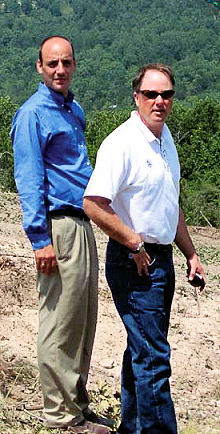 |
"To me, it's one of the most exciting things going on in aviation right now," Bourk says. "We've constructed a private commercial service airport - the first of its kind in the country, and I am very excited to be a part of it."
Bourk was brought into the Branson project in mid-2007, with a rich aviation background. He started flying when he was 14, soloed at 16 and received his pilot's license at 17. He later earned a degree in aviation management from Embry-Riddle Aeronautical University and an MBA from Daniel Webster College.
He previously worked for Avports for roughly eight years, putting in time at Westchester County and Teterboro airports. Bourk then moved to Portland, ME, where he became deputy airport director.
Branson Airport LLC, notes president and CEO Steve Peet, was formed in 2002 to manage the building and operation of the new airport. Peet is also a board member of Aviation Facilities Company (AFCO), the development overseer that also has a "very tiny share" in the airport project. Branson Airport LLC has a five-person board.
AFCO purchased land for the airport from Glenn Patch, a Branson real estate developer who thought an airport could be built on his development, Branson Creek.
 |
A Private Matter
In determining the feasibility of an airport for the Branson region, Peet says AFCO looked at the demographics of southern Missouri as well as the "bigger issue" - tourism. Branson has roughly eight million visitors each year, which makes it one of the major tourist destinations in the country. Almost six million of the visitors travel from beyond 300 miles. "The visitation numbers to Branson are enormous - larger than Daytona Beach and Reno, Nevada," says Peet. "But it's certainly the only tourist destination of that magnitude that (did) not have good air service into it. That was the starting point." Springfield-Branson National Airport is one hour away but does not have low-cost carriers, say BKG officials.
AFCO not only researched the number of visitors to the Branson region, but also where they were coming from, Peet explains. It found that of those eight million annual tourists, roughly five million travel from great distances. "So it's kind of a core assumption, based on actual visitations to Branson, that you can probably entice people who are currently driving long distances to fly (instead)," he says. "More importantly, you could probably get their neighbors and others to fly who wouldn't consider taking such a long drive."
 |
So why not have a publicly funded facility? "The biggest reason," Peet explains, "is if we did it with public money, there would be no opportunity to make money. This is a private venture and we are a profit-driven venture."
Additionally, AFCO believed it could build a facility more efficiently than a municipality could. By keeping costs low, required volumes are also fairly low. As demand proves itself, says Peet, the airport would become a "quite profitable venture."
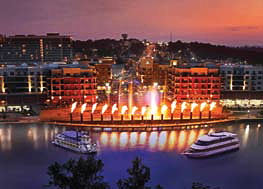 |
When a change needs to be made at Branson, Bourk notes, he will not have to go through months of city council meetings. "If it makes business sense, I can do it," he says.
Pulling it Together
As an owner in AFCO, Peet calls himself a "passive investor" in the early phases of the airport. Around 2004, a financial plan started materializing. Visiting Branson, Peet says, gave him a greater focus on the airport. "At that point, I threw myself in 100 percent and have been working on it ever since," he says.
 |
Convincing investors to come on board was not the easiest task, notes Peet. "It was quite a bit of work," he comments. "This is not something that has been done before. There is no model you take off the shelf to show someone how it was going to be successful."
But, the business model was compelling enough for AFCO to pull together equity investors, while Citigroup underwrote a 30-year tax-exempt $114 million bond offering.
In order for Branson Airport LLC to achieve tax-exempt bonds, the airport was gifted to Taney County in exchange for a long-term operating lease. "At the end of 45 years, the whole operation will revert back to the county," Peet explains.
Traffic is Key
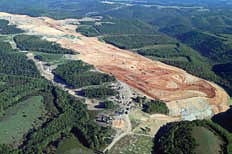
The business model is "very volume-driven," says Peet. "The more passengers we can flow through the airport, the more revenue we produce," he says. Keeping costs down is also key. In total, the airport project is valued at some $150 million. "I sincerely believe that if it was a municipal project, it would have taken two or three times as long and would have cost two to three times as much money," Peet maintains.
AFCO and Peet expect Branson to be profitable "very soon," he says. "We expect to be cash flow positive this year."
Although it's privately funded, BKG operates just like every other airport, Peet notes. At the same time, though, it has different motivations. "We're a business and looking for business opportunities," he adds. As a privately held business, he says, Branson was better able to control construction costs. He also predicts it will be better able to control operating costs.
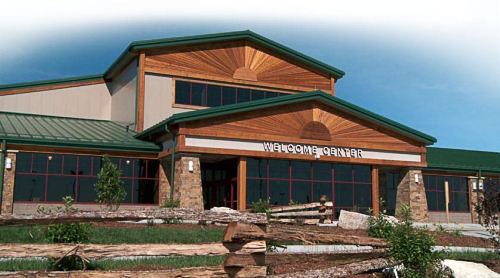 |
Exclusive Agreements
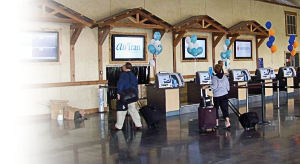
A central difference between Branson and other airports is its ability to negotiate with the airlines. Each negotiation, says Peet, is direct and separate. "One has no bearing on how we have to deal with another," he says. Branson has consequently used exclusivity or initial development rights to attract carriers.
"Airlines that take the initial risk on routes into Branson can be offered the opportunity to serve those routes without direct competition for a negotiated period of time," Peet explains. Exclusivity, he notes, could be a "double-edged sword" that Branson needs to use with care. "We don't want to have a different business model than we have," he says. "We don't want an airline with exclusivity to offer high fares where their model may be low volume-high fares. We clearly want low fares-high volume.
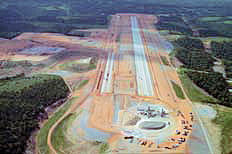 |
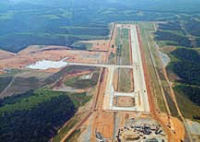 |
Other Opportunities
Another unique aspect about the Branson Airport is a per passenger agreement it negotiated with the city. Because the city assumed no risk to develop the airport but will certainly benefit if the airport is successful, it pays the airport $8.24 per incoming passenger, with an annual cap of $2 million per year for 30 years. "That's certainly a revenue line that other airports don't have," Peet says.
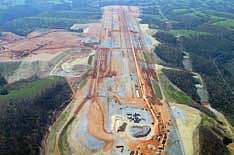 |
"I think everybody [in Branson] wants it to succeed because it means they will be bringing more visitors to the area, but they don't have any implicit risk," he says.
For Peet, there is only one Branson: "I don't think that if we prove successful that it means automatically that you could do it elsewhere. But, at the same time, I think the way we operate, our business plan, there are probably aspects of it that could be drawn on in other situations.
"It's an extremely exciting project," he says. "I can't tell you how much I love a project where our success is also tied into the community's success."
FREE Whitepaper
PAVIX: Proven Winner for All Airport Concrete Infrastructure
International Chem-Crete Corporation (ICC) manufactures and sells PAVIX, a unique line of crystalline waterproofing products that penetrate into the surface of cured concrete to fill and seal pores and capillary voids, creating a long lasting protective zone within the concrete substrate.
Once concrete is treated, water is prevented from penetrating through this protective zone and causing associated damage, such as freeze-thaw cracking, reinforcing steel corrosion, chloride ion penetration, and ASR related cracking.
This white paper discusses how the PAVIX CCC100 technology works and its applications.








